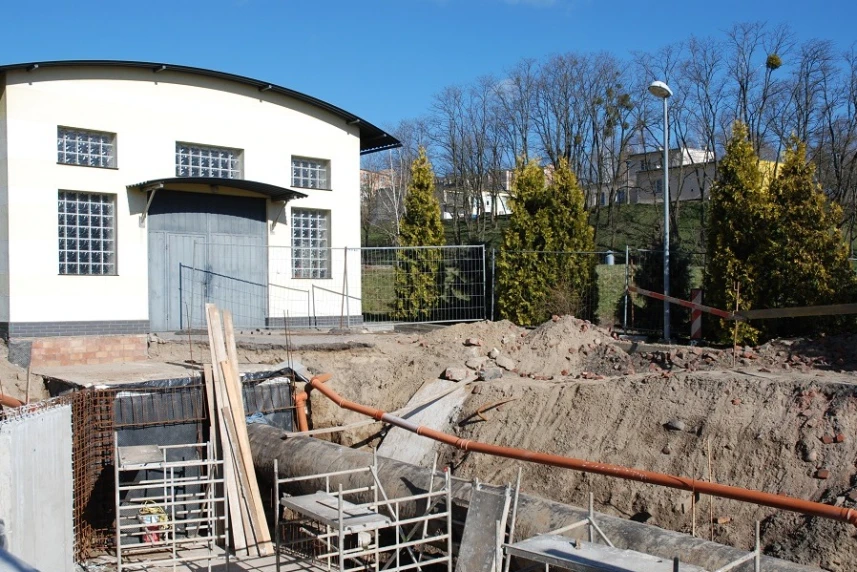Municipal Water and Sewage Company: Reaping the fruits of our projects from recent years
Marta Kufel

An extensive plan for 2024 is a continuation of the systematic actions we’ve already completed. We see the result of the projects every day, for instance the produced energy or a lower number of failures in the underground infrastructure. The result is also increased comfort of residents connected to the new sewer network.
In recent years, the Municipal Water and Sewage Company (ZWiK) focussed on two major projects implemented with the support of EU funds. These were two stages of the programme “The Clean Oder in Szczecin”; the value of both exceeded PLN 217 million. The objective was to improve the operation of the city's water and sewage system. In both projects a total of 26 tasks were carried out, including the construction of the sewer system in Wielgowo-Sławociesze, Płonia and Żelechowa housing estates, upgrading the wastewater treatment stations in Pomorzany and Zdroje, the “Górny Brzeg” and “Białowieska” wastewater lifting stations and the trunk water main from Miedwie.
During the implementation of the projects, considerable investments were made for generating electricity from the company’s own sources. In the years 2017–2022, the wastewater treatment stations in Pomorzany and Zdroje were upgraded, with new biogas containers installed, which increased the capacity for producing green electricity in both treatment stations.
“Particular attention should be drawn to the project carried out in the “Pomorzany” Water Production Plant, which is innovative on the national scale. The Francis turbine for producing electricity was installed there,” said Hanna Pieczyńska, the Press Spokesperson of ZWiK.
The appliance with the generator was placed in the Miedwie trunk water main. It uses the gravitational energy of falling water in the conduit In to run and produce electricity (the level difference between Miedwie and Pomorzany is more than 30 metres). The installed capacity of the device is approx. 140 kW. The turbine works 24/7 as a run-of-river power plant, and the generated electricity is used by the water production plant.
With the projects completed since 2018, ZWiK remains the leader in producing electricity from the company’s own sources. In addition to the mentioned undertaking, the Company has completed more PV plants.
“The largest of them, with a power of 0.5 MW, was built next to the “Pilchowo” Water Production Plant. Furthermore, in 2020 ZWiK launched two smaller PV plants (on ul. Łączna and ul. Batalionów Chłopskich), and two years later a small PV system on the roof of an office building at ul. Golisza,” Pieczyńska mentioned.
With the projects, each year ZWiK is becoming more and more self-sufficient when it comes to electricity supply. Currently 30% of the electricity used by the Company comes from its own sources.
Another major project of ZWiK was the programme “Szczecin’s adapting to climate change.” It consisted of over a dozen tasks, the purpose of which was to improve the quality and safety of drinkable water supply, thus adjusting the city’s water supply system to the progressing climate change. The projects completed within the programme consisted of building new or redeveloping existing water conduits. The work was carried out on the following streets: Batalionów Chłopskich, Piechoty, Jaśminowej, Młodzieży Polskiej, Walecznych, Kopernika, Śląskiej, Jana z Kolna and Piotra Skargi. The major tasks also included the construction of the water supply interconnection from Załom to Wielgowo with a length of over 6 km and the upgrade of the ozone treatment system in the Miedwie Water Production Plant. The total cost of the project was over PLN 21 million.
“Investment tasks are only a part of our operations. Last year ZWiK began an extensive action promoting drinking tap water. It started together with the project “Jak? Gdzie? Co? H2O! – how water in Szczecin moves from source to sink.” Its objective was to promote healthy habits among children and adolescents, in particular with regard to drinking water from dispensers or sinks. 23 schools were selected for the project, with 40 water dispensers installed in school buildings,” Pieczyńska said.
The programme objectives are:
- to promote healthy attitudes from the youngest age
- to show the water production process from source to sink
- to increase awareness of sustainable water management
- to show the connection between people’s actions and water environment pollution
- to introduce good water use habits
- to show ways to use water rationally
- to encourage greater use of alternative water sources
- to increase environmental awareness.
- 2024 brings new challenges, which will strengthen our leading position in the electricity production domain and in other areas, improving the infrastructure we manage.